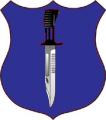How about this?
1 Airborne corp for immediate response/forcible entry
1 HIC Corp with supporting RC forces as Ken Suggests
1 Corp focused on stabilization/COIN with a mixture of active and RC brigades
2 or 3 "Full Spectrum" Corps that would have broader mission lists but not be expected to respond as rapidly as the more specialized corps.
The strategic idea is that the specialized corps would be the first response to situations that fit their mission set. The "full spectrum" corps would then have some time to do more focused training and do whatever reorganization necessary before they deploy.


 Personally, I would be inclined to place ODS and the invasion of Iraq in 2003 into that category.
Personally, I would be inclined to place ODS and the invasion of Iraq in 2003 into that category.













Bookmarks